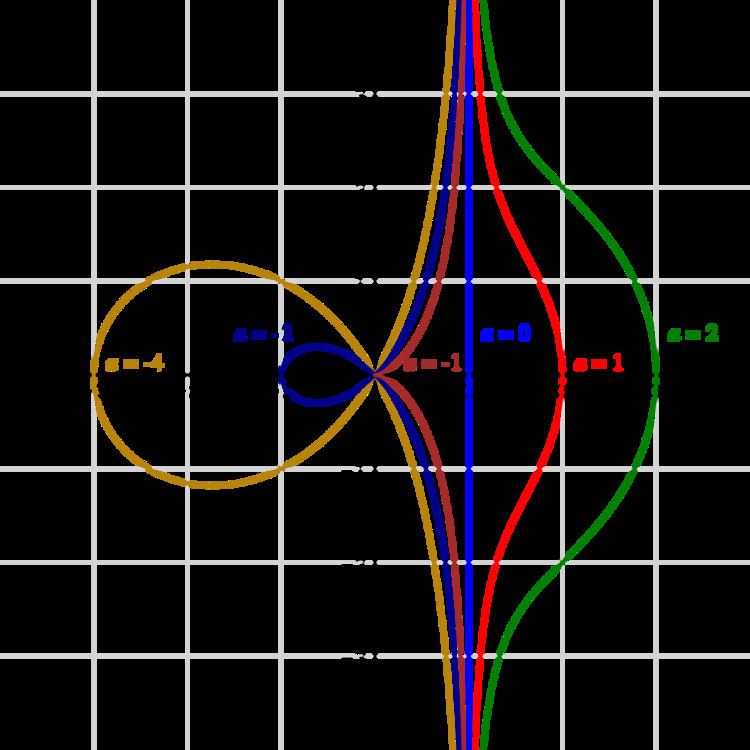 | ||
The conchoid(s) of de Sluze is a family of plane curves studied in 1662 by René François Walter, baron de Sluze.
The curves are defined by the polar equation
In cartesian coordinates, the curves satisfy the implicit equation
except that for a=0 the implicit form has an acnode (0,0) not present in polar form.
They are rational, circular, cubic plane curves.
These expressions have an asymptote x=1 (for a≠0). The point most distant from the asymptote is (1+a,0). (0,0) is a crunode for a<−1.
The area between the curve and the asymptote is, for
while for
If
Four of the family have names of their own:
a=0, line (asymptote to the rest of the family)a=−1, cissoid of Dioclesa=−2, right strophoida=−4, trisectrix of Maclaurin